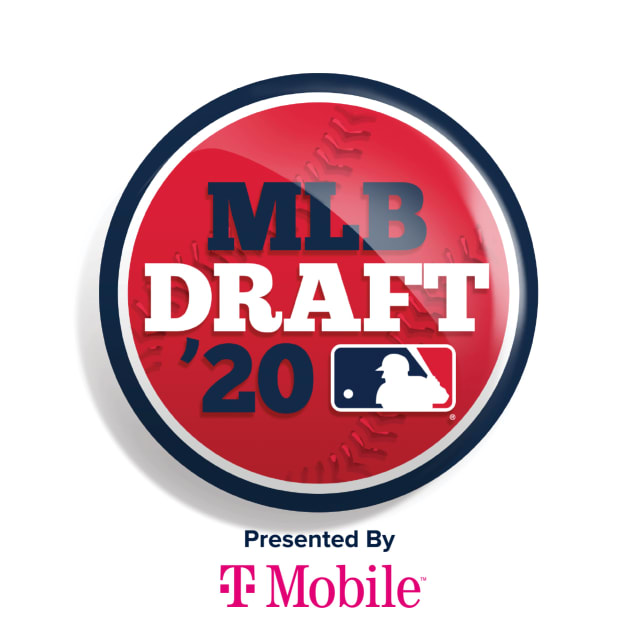Everything to know about Rockies' 2020 Draft
This browser does not support the video element.
DENVER -- The questions begin now that the Rockies are finished with the 2020 MLB Draft -- shortened from 40 rounds to five as a result of high school and college seasons truncated by the coronavirus pandemic. Six players will go about trying to provide answers when the game resumes.
Do the comparisons to the Dodgers¡¯ Cody Bellinger and the Brewers¡¯ Christian Yelich truly fit the Rockies¡¯ top pick (ninth overall), outfielder Zac Veen from Spruce Creek (Port Orange, Fla.) High School? Can Drew Romo, from The Woodlands (Texas) High School taken 35th overall, defy the spotty history of high school catchers who go pro immediately?
? Rockies Draft Tracker: Every 2020 pick
Three big, hard-throwing pitchers -- University of Miami righty Chris McMahon (second round), Clemson lefty Sam Weatherly (third) and Douglas County (Colo.) High righty Case Williams (fourth) -- will try to prove they can eventually conquer Coors Field. How far can contact hitting, steady play and winning intangibles on a successful team take University of Michigan shortstop Jack Blomgren (fifth)?
Now what?
The signing deadline this year is Aug. 1. Signability has not been a concern for the Rockies since 2000, when first-round pick Matt Harrington, a pitcher, did not sign. The Rockies don¡¯t take players this high in any Draft without knowing they¡¯re ready to turn pro.
They also strategize to stay within their bonus limits. But for the purpose of completeness, let¡¯s give you the rules.
If a club exceeds its assigned pool, it faces a penalty. (The Rockies¡¯ pool for their six picks is $10,339,700.) Teams that outspend their allotment by 0-5 percent pay a 75 percent tax on the overage. At higher thresholds, clubs lose future picks: a first-rounder and a 75 percent tax for surpassing their pool by more than 5 and up to 10 percent; a first- and a second-rounder and a 100 percent tax for more than 10 and up to 15 percent; and two first-rounders and a 100 percent tax for more than 15 percent.
In eight years with these rules, teams have exceeded their allotments a total of 149 times but never by more than 5 percent. Twenty-one of the 30 teams outspent their pools last year.
Trend wrap
Why do the Rockies have a best-player-available philosophy? Sure, pitchers who can function at altitude are hard to find. But remember that position players on the free-agent market are expensive. The current team -- largely the same group that went to the postseason in 2017 and '18 -- is largely drafted and developed. After Veen and Romo, the Rockies took three pitchers and an infielder, so they checked all the boxes positionally.
First-round fact
When Veen was 12 and in middle school, he¡¯d ride his bike a mile and a half after school each day to watch Spruce Creek High practice. There, he would boldly ask step into the batter¡¯s box and request that coach Johnny Goodrich watch his swing and give him tips. Years of work has paid off in a top-round Draft position.
This browser does not support the video element.
Day 2 name to watch
Weatherly looks ready to put it all together after a number of trials. Named Michigan High School's Mr. Baseball in 2017, Weatherly went to Clemson as a two-way player, then became a reliever before blossoming this year as a starter in brief action. Will his fastball command catch up with a slider that is his current best pitch?
This browser does not support the video element.
NDFA strategy
Blomgren was taken in the fifth round and 140th overall, meaning his slot is valued at $394,300. Those undrafted free agents are capped at $20,000. Will these signings tend to be college seniors? Who knows? It¡¯s possible the Rockies have an advantage. An analytics-driven Draft tends to be college-heavy because there is more detailed information on how they play against high-level competition, and often three years of background information.
Because the Rockies don¡¯t shy away from high schoolers, they spend years gathering all they can and building relationships with players early in their high school careers. That means whether the players they pursue are in high school or college, the Rockies know a lot about their priorities and family situations.
The last word
¡°The only real, true difference was that it was five rounds instead of 40.¡± -- General manager Jeff Bridich
